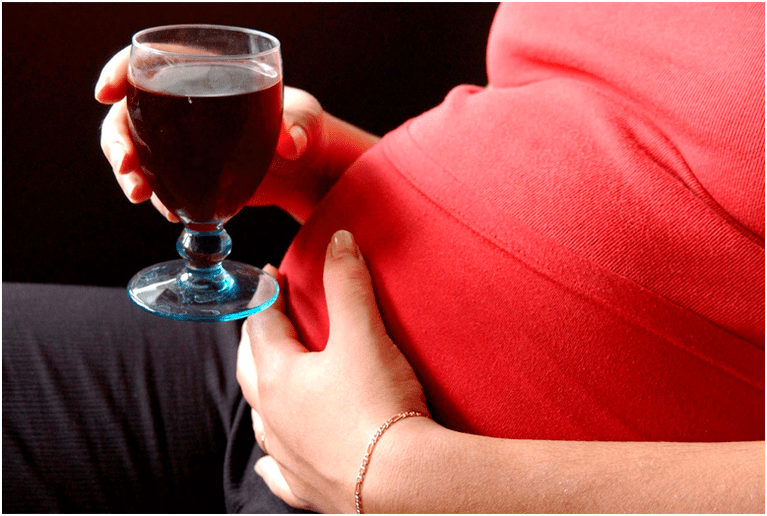The scandalous British psychotherapist David Nutt, who became famous not only for his scientific achievements, but also for his habit of expressing his thoughts and beliefs directly and without unnecessary overtones, argued that there is no substance more dangerous for a person than alcohol. In terms of the degree of destructive action, ethyl alcohol surpasses many poisons and narcotics, but for some reason the habit of drinking in the evening is considered normal by most people.
Of course, when alcoholism crosses social boundaries and a person slips into the abyss and begins living a marginal lifestyle, it is perceived as slow suicide, but are most people so critical of so-called domestic intoxication? A glass or two of wine with dinner, a bottle of beer at a football game, or 100 grams of liquor at a meeting with a friend may be considered appropriate, as is a cup of tea, but such a habit ends up causing no less devastating damage than chronic drinking. Is alcohol so dangerous or just a cliché? Let's turn to the opinion of scientists.
The harm of alcohol to the human body: briefly about the most important thing
So what is the main danger of alcohol? In its deceptive harmlessness! California scientists claim that ethyl alcohol is perfectly safe in small amounts. They are tactfully silent about where "a small amount" ends and "drunkenness" begins. It is also impossible to find information on who funded these studies as they are not published in a high profile scientific journal that needs all protocols of experiments and data on sponsors. Is it because alcohol industry representatives are at the top? It remains only to guess.
At the same time, there is no such addiction that would arise by itself - most often alcoholism arises precisely from the habit of drinking a bottle in moments of particular joy and sadness in the circle of friends and relatives. And we're not talking about notorious alcoholics who can't go a day without a bottle of cheap wine - those who ruin their health every day are enough in intelligent circles.
It is difficult to find a more insidious liquid than alcohol. It acts on the brain like serotonin (the natural happiness hormone) and causes an imaginary feeling of happiness and good mood. It is this effect that is responsible for forming a habit - instead of learning to enjoy a full life, it is easier to darken the mind with a substitute for pleasure.

However, this effect is quickly replaced by a much less pleasant one - a complete loss of control over one's emotions and actions allows a drunk person to "appear in all his glory. "Some show aggression, others start crying for no reason, others are overly affectionate. . . The number of manifestations of drunkenness is large, but none of them looks attractive from the outside.
Also, inappropriate behavior is far from the worst accompaniment to intoxication. According to statistics, more than half of traffic accidents and a third of suicides occur while intoxicated. With each glass that is drunk, the number of cells in the cerebral cortex is gradually reduced, but the irreversible effect is not felt immediately. Look into the eyes of a long-time, regular drinker—healthy thoughts, social norms, and human perception are gradually being replaced by mundane animal instincts and the craving for a bottle. In addition, this process is irreversible - if the destroyed liver can still be treated a little, the cerebral cortex will not be restored. Australian scientists have proved that even those who moderately drink alcohol 2-3 times a week gradually reduce the size of the brain and its functionality decreases due to shrinkage. On average, 200ml of strong 40 degree drink kills 1000-2000 cells. Keep that in mind as you pour another glass!
Harm of alcohol for men

Like any substance that causes addiction, ethyl alcohol acts secretly - at first you will not notice any changes and unpleasant health consequences, but over time, when it will be impossible to refuse a drunk glass, you yourself will understand how deceptive the first one isimpression is. And even the belief of some drinkers that a bottle will help them relax and relieve stress is nothing but self-delusion. Such a feeling causes paralysis of the center of attention and self-control - ethanol, getting into the blood, affects the centers of the brain and simulates a feeling of euphoria, which overshadows all other feelings and clouds the rational perception of reality. The same goes for marijuana or hashish. Why is the harm of drugs already known to a child and alcohol is perceived as indulgence? No Answer…
In addition, the stereotype imposed by the media and advertising about the brutality and masculinity of the stronger sex is directly related to the consumption of alcoholic beverages. A glass of beer, a glass of whiskey or rum is considered a noble pastime for true gentlemen, but that is not the case at all. Yes, this glass will be invisible at first, but with each new sip, the vessels and capillaries will become more vulnerable and less elastic, and the heart will work at half strength. This means that after a couple of years of a regular "evening with a drink", blood circulation will inevitably be disturbed, and as a result, impotence will appear, which cannot be eliminated even with the help of modern sexual enhancers - none of these drugs are subject to strict alcohol restrictions. So, Dear men, remember that raising one glass after the other robs oneself of an important aspect of a fulfilling life.
The harm of alcohol on a woman's body
Female alcoholism is much worse than male alcoholism. Although ethanol is equally destructive to the organisms of both sexes, the female physiology is much more bizarre: the vulnerability, emotionality and psychological sensitivity of the fair sex is a reasonable physiological trait, which means that they develop a dependency on the illusion of happiness and calm faster. Trying to hide from problems in alcoholic oblivion, women get drunk much faster, because the body cannot resist this attachment, and the peculiarities of psychology hinder the mind's attempts to overcome the craving for a glass.
In addition, a woman's liver filters ethyl alcohol worse, which means that under its influence it is broken down faster. As statistics show, the first signs of cirrhosis appear on average after 5 years of alcohol addiction in women, and after 7 years in men. And although the difference is small, it clearly shows that the female body is a priori more sensitive than the male to alcohol.

What are the dangers of alcohol during pregnancy?
A pregnant woman is a sacred vessel in which the life of an unborn child is hidden. Unfortunately, not every woman perceives the state of pregnancy in this way. Modern trends dictate new rules: today, ladies "in position" do not give up anything, including a glass of red wine, which a gynecologist supposedly recommends to them to relieve tone and general relaxation of the body. Who issued these doctors the diploma of medical education"What do gynecologists use as a guide when recommending this to pregnant women? There are many proven and safe ways to relieve stress, such as getting some fresh air, meditation, simple yoga exercises, or walking in nature. What about the alcohol?
Studies by the American Association have shown that the neonatal mortality rate of alcoholic mothers is 5 times higher than that of non-alcoholic mothers. And this is not about alcohol addiction, but about the notorious "cultural drinking", called everyday drinking. Already in the womb, ethanol affects the fetus, causing underdevelopment, mental retardation and other pathologies that will accompany the child throughout his lifeIs his suffering worth the imaginary pleasure of a mother who couldn't refuse a glass of alcohol?
An interesting experiment on the effect of alcohol vapors on embryos was carried out at the Federal Medical and Biological Center. 160 eggs were placed in the incubator, at the same time an ethanol steam generator was installed in the room. As a result, half of the embryos simply did not form, and of the remaining 80, 40 died in the first days after birth, and another 25 had serious deformities - for example, without a beak, with a wing or with a wrongly formed leg. Worth considering!
The harm of alcohol on a teenager's body
There is no innate need to drink alcohol, nor can there be – children learn this by observing their families and loved ones. If the advertising, sale and consumption of alcohol were banned on the same day, no child would feel disadvantaged or inferior and certainly not suffer from the desire to try alcohol-containing products. However, the statistics change significantly with puberty: more than 60% of modern teenagers try alcohol by the age of 15, and by the age of majority their percentage reaches 90 years.
Research of our scientists B. S. Bratusya and P. I. Sidorova showed that children from kindergarten age can easily reproduce the process of drinking and intoxication. If you ask the children to play a wedding, a birthday, or a trip to a party, they involuntarily clink their glasses, pour drinks into them and say toasts. This creates a stereotype that alcohol is a companion to celebration and fun, a symbol of a carefree and happy adult life. This is where adolescent alcoholism begins.

What harm does alcohol do to today's teenagers?
Today's teenagers perceive alcohol as a small and idle pastime that allows them to overcome first disappointment, manage first-date awkwardness, or just have fun with friends. But even a glass of a low-alcohol beverage like beer or homemade wine is enough for a fragile body to get drunk and lose control.
Drinking is a misguided opportunity for teenagers to assert themselves, to feel more mature, more composed and more courageous. Portraying yourself as a "bad guy" or "fatal girl" with alcohol is as easy as peeling a pear, but is it all as harmless as it seems? Destructive behavior, attempts to appear more mature, boasting, and hysteria are far from the worst accompaniments of teenage drinking. Most young people lose their sense of proportion after enjoying a glass and gradually succumb to a feeling of surrogate euphoria. This is how attachment is formed, and considering that in adolescence the body as a whole and the psyche in particular are not yet fully formed, it will be much more difficult to overcome the created addiction than in adulthood.
The harm of alcohol to the human body: results
Data from the World Health Organization is beyond any doubt: every third premature death is somehow related to alcohol consumption. Some drink to the point of complete destruction of the body, others get into accidents under the influence of alcohol, still others lose their self-control and harm themselves. However, today a conscious decision to lead a sober lifestyle is not so easy: successful men and women with a glass of alcohol are watching usfrom TV screens, billboards, and their own smartphones, and only at the bottom, in small and almost imperceptible writing, is a footnote: "Excessive consumption of alcohol is harmful to our health" to comply with the law.
Such mass advertising has a simple explanation: the profitability of the alcohol industry is estimated at billions of dollars, with each potential consumer being another opportunity to line their pockets. To resist this propaganda, all you have to do is think with your own head and worry about your own health. The atomic explosion at Hiroshima killed 200, 000 people, and alcohol kills about 1. 5 million people each year. That's all the math. . .
6 reasons to give up alcohol
A glass of wine is often offered as a relief from stress and emotional difficulties. At the same time, alcohol can be a source of many problems. We tell you why no alcohol is better.
Alcohol is a depressant
Alcohol is often called an antidepressant, and that's not true. It only relaxes the body for a short time and improves mood by increasing the pleasure hormone dopamine. But then the body adapts to producing the hormone, and more and more is needed to produce the effect. In addition, tetrahydroisoquinoline is formed, a substance that blocks the production of dopamine and serotonin. A person stops enjoying life without stimulation, falls into depressive moods. Thousands of neurons are destroyed that cannot be restored.
A momentary uplift in mood is followed by an increase in aggression and apathy. Scientists say that alcohol contributes to insomnia, increases anxiety, and with systematic use can cause nervous disorders.
The negative effects on mood are reduced after two weeks of abstinence from alcohol, and within a month they are almost completely eliminated - a person restores mental functions, mood normalizes, vitality and motivation increase.
Alcohol consumption affects appearance
With frequent alcohol consumption, the skin loses its elasticity due to dehydration. This leads to premature skin aging and cosmetic problems: redness and swelling, a greyish skin tone, bruises under the eyes and fine lines appear. Cholesterol rises in the blood, causing reddish streaks on the whites of the eyes. When a person stops drinking, most of the body's functions are gradually restored, which has a positive effect on appearance. Depending on how long you drink, this can take anywhere from a few weeks to several years.
Alcohol causes overeating
Ethanol stimulates a special AGRP protein called "obesity protein. " It significantly increases appetite and causes gluttony, even when a person is full of energy and doesn't want to eat. The habit of drinking a glass of wine helps boost metabolismto slow down, so it is better to replace alcohol with healthy drinks.
Alcohol makes you sick
Alcohol is the cause of cirrhosis and hepatitis due to inflammation and scarring of liver tissue. It actively destroys the pancreas and causes a tendency to diabetes. The walls of the intestine are destroyed under the influence of alcohol, the structure of the cells changes, they no longer fully absorb useful substances, which adversely affects the immune system and general health. Alcoholic beverages affect most organs. In the stomach, the production of mucin is suppressed - a substance that protects the mucous membrane from irritants. Without them, the stomach is prone to gastritis and peptic ulcer disease.
The intestinal microflora is gradually restored within a week after ridding the body of alcohol. By the way, alcohol withdrawal from the female body is 20-25% slower than that of men. If a person stays sober for two weeks, he has clear thoughts, blood pressure normalizes, heart rate stabilizes, shortness of breath and headaches disappear.
constant financial expense
One of the non-obvious but pleasant consequences of giving up alcohol is savings. High tariffs are levied on raw materials for wine production, so ready-made drinks are mainly bought in the country from abroad. Alcohol prices are constantly rising, and if you're drinking quality drinks (and the others aren't worth it), it's going to impact the budget. Even at an average cost of about a glass of wine with dinner each month, you'll save quite a bit. Added to this are the costs of visiting a doctor and buying medicines and cosmetics, which you will need much less if you lead a healthy lifestyle.
The risk of developing alcoholism
It seems that alcoholism can develop only in disadvantaged people. In fact, this is not always a pronounced disease with external signs. An early-stage alcoholic may maintain an active social life, going to work, caring for loved ones, and hanging out with friends. Alcoholism occurs regardless of standard of living, wealth and education. At the same time, malfunctions that are not obvious at first glance appear in the work of the body and psyche. Therefore, it is especially important to control this habit and monitor your health to avoid irreversible consequences. In addition, the sooner a person stops drinking alcohol, the faster most of the problems that arise from this will be resolved.
What if it's just a little?
Often one finds the opinion that alcohol in small doses is good for health. American Heart Association doctors argue with this theory. Over the course of six years, they observed about five thousand volunteers, half of whom drank often and gradually - in the evening only a glass of wine or a mug of beer. Experts noted that according to general health indicators, these people have an increased risk of developing disorders of the cardiovascular system, including an increased likelihood of atrial fibrillation.

































